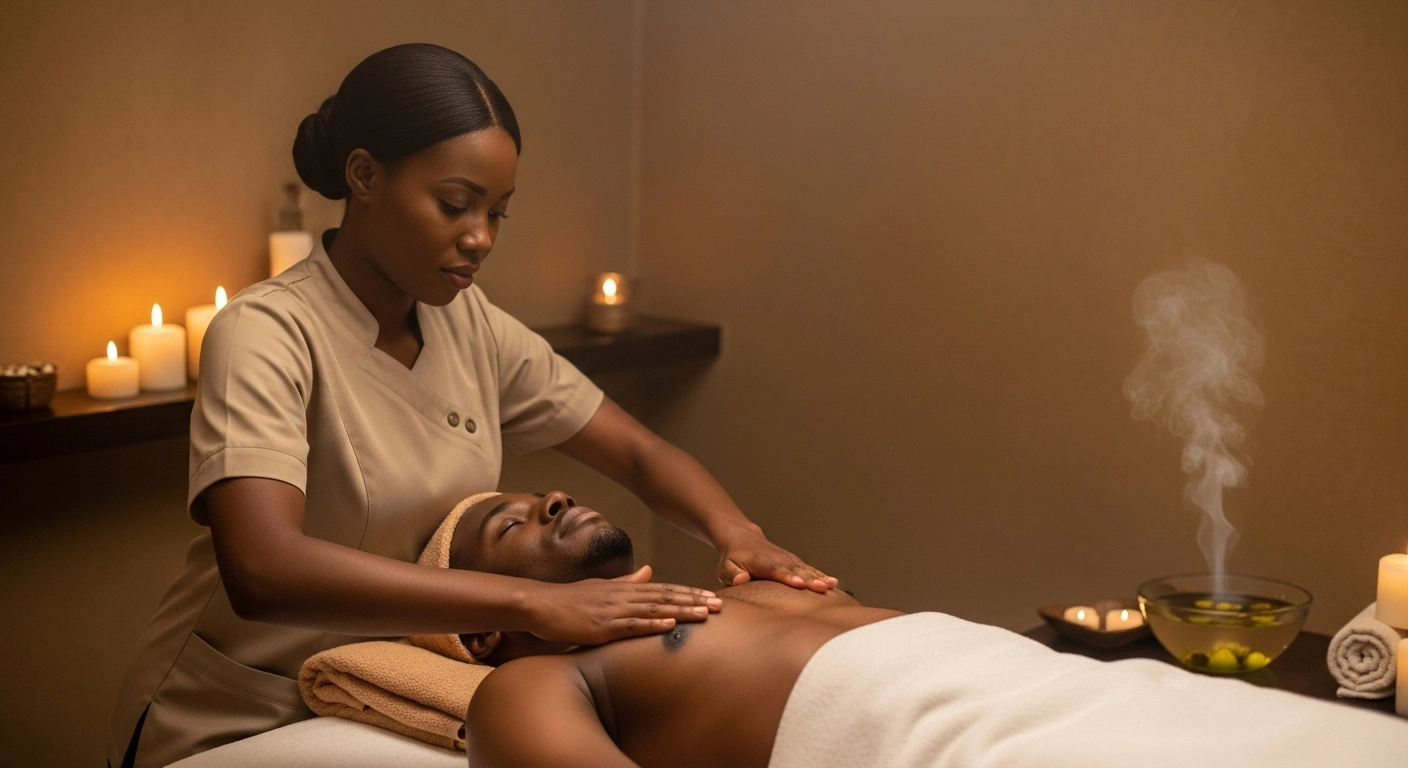If you’ve ever wondered what actually happens during a professional breast massage session, you’re not alone – many women are curious but hesitant to ask about the specific techniques and approaches used in therapeutic settings. You might be concerned about what to expect, whether the techniques will be uncomfortable, or how professional methods differ from basic self-massage you might try at home. The uncertainty around professional breast massage techniques can create anxiety and prevent women from seeking care that could significantly improve their comfort and health. Without understanding what trained therapists actually do during sessions, it’s natural to feel apprehensive about booking an appointment or knowing whether you’re receiving appropriate, evidence-based care.
The reality is that professional breast massage techniques are highly specialized, scientifically-grounded methods that require extensive training to perform safely and effectively. At Lebien etre, we use established therapeutic protocols that have been refined over decades of clinical practice and research to provide maximum benefit while ensuring complete safety and comfort. Therapeutic techniques employed in professional settings go far beyond basic rubbing or general massage – they involve precise pressure applications, specific directional movements, and sophisticated understanding of breast anatomy and physiology. Understanding these professional methods can help you make informed decisions about your care and know what to expect when you choose to work with trained specialists who have the expertise to address your specific needs effectively.
Foundation Techniques in Professional Breast Massage
Swedish Massage Adaptations for Breast Tissue
Swedish massage techniques form the foundation of many professional breast massage approaches, but they require significant modification to be appropriate and effective for delicate breast tissue. Traditional effleurage strokes are adapted to use lighter pressure and follow the natural contours and drainage patterns of the breast area, creating a gentle introduction that helps prepare tissues for deeper work.
Petrissage movements in professional breast massage involve careful kneading and lifting motions that enhance circulation without causing discomfort or tissue trauma. These techniques require precise hand positioning and pressure control that can only be achieved through proper training and experience.
Friction techniques are used sparingly and with great care in breast massage, typically employed only for specific therapeutic goals like scar tissue management or addressing areas of fascial restriction. Professional therapists understand when and how to apply these more intensive techniques safely.
The rhythm and flow of Swedish-based techniques in professional settings create a therapeutic experience that promotes relaxation while achieving specific clinical goals, something that distinguishes professional work from casual or untrained approaches.
Manual Lymphatic Drainage (MLD) Protocols
Manual lymphatic drainage represents one of the most sophisticated and specialized techniques used in professional breast massage, requiring extensive training to perform correctly. MLD uses extremely light pressure – often compared to the weight of a nickel – and specific rhythmic movements that stimulate lymphatic flow without overwhelming the delicate lymphatic vessels.
Lymphatic pathways in the breast area follow complex routes that professional therapists must understand thoroughly to achieve optimal drainage results. The importance of understanding these natural drainage patterns is crucial for therapeutic success.
Sequence and direction are critical in MLD, as improper technique can actually impede lymphatic flow rather than enhance it. Professional protocols always begin by “clearing” the major lymphatic terminus points before working on more distal areas, ensuring that lymph fluid has somewhere to drain.
Our comprehensive approach to Lymphatic System Health demonstrates the complexity and importance of proper lymphatic drainage techniques in professional settings.
Myofascial Release Techniques
Myofascial release addresses the connective tissue networks surrounding breast tissue, which can become restricted due to posture, trauma, surgery, or chronic tension patterns. Professional application of these techniques requires understanding of fascial anatomy and the ability to sense tissue restrictions through skilled palpation.
Sustained pressure is the hallmark of professional myofascial release, with therapists applying gentle, consistent force for 90-120 seconds to allow fascial restrictions to release naturally. This patience and precision cannot be replicated through self-treatment or casual massage approaches.
Three-dimensional awareness guides professional myofascial work, as fascial restrictions often create pulling patterns that extend far beyond the immediate area of symptoms. These techniques can provide relief throughout the entire upper body when properly applied.
Integration with movement often accompanies myofascial release techniques, with therapists guiding clients through gentle movements that help consolidate tissue changes and retrain healthy movement patterns.
Specialized Techniques for Specific Conditions
Lactation Massage Protocols
Therapeutic lactation massage involves highly specialized techniques designed to support breastfeeding while addressing common complications like engorgement, plugged ducts, and mastitis. These methods require specific training in lactation physiology and understanding of how massage affects milk production and flow.
Pressure gradients used in lactation massage must be carefully controlled to provide therapeutic benefit without causing tissue damage or interfering with milk supply. Professional therapists understand how to apply appropriate pressure that enhances milk flow without creating additional inflammation.
Directional techniques follow the natural architecture of milk ducts, working from the chest wall toward the nipple in patterns that support healthy milk drainage. Incorrect direction or pressure can worsen blockages or create new problems, making professional expertise essential.
Evidence-based lactation massage protocols have been shown to reduce mastitis incidence and improve breastfeeding outcomes when performed by properly trained professionals, as detailed in our Postpartum Breast Massage services.
Post-Surgical Rehabilitation Techniques
Scar tissue mobilization requires advanced training and understanding of wound healing phases to perform safely and effectively. Professional techniques for post-surgical breast massage must consider the specific type of surgery, healing timeline, and individual tissue response patterns.
Lymphatic restoration after breast surgery involves sophisticated techniques designed to establish alternative drainage pathways when normal lymphatic channels have been disrupted. This work requires coordination with medical teams and understanding of surgical anatomy.
Range of motion preservation through targeted massage and movement techniques helps prevent adhesions and maintains functional mobility after breast surgery. Professional protocols are carefully designed to support healing while preventing complications.
Tissue integration techniques used in breast reconstruction recovery help new tissue establish proper connections and function, requiring specialized knowledge of reconstruction procedures and healing processes.
Pain Management Protocols
Trigger point therapy in the breast and chest area requires precise anatomical knowledge and skilled palpation to identify and treat specific points that may be referring pain to distant locations. Professional training includes understanding referral patterns and safe treatment approaches.
Nerve mobilization techniques address areas where nerves may be compressed or irritated, particularly common in women with large breasts or those who have experienced trauma or surgery. These techniques require advanced training and careful assessment skills.
Inflammatory response modulation through specific massage techniques helps manage both acute and chronic pain conditions affecting the breast area. Professional approaches consider individual pain patterns and underlying causes rather than using generic protocols.
The comprehensive approach to pain management is detailed in our Upper Body Comfort services, which demonstrate how professional techniques address complex pain patterns.
Assessment and Treatment Planning Methods
Initial Evaluation Techniques
Comprehensive health history taking is essential before any professional breast massage treatment, including medical history, current medications, previous surgeries, and specific symptoms or concerns. This information guides technique selection and safety considerations throughout treatment.
Postural assessment helps identify biomechanical factors that may contribute to breast discomfort or dysfunction. Professional therapists examine shoulder position, ribcage alignment, and overall upper body mechanics as part of comprehensive evaluation.
Tissue palpation requires advanced training to distinguish between normal tissue variations and areas that need therapeutic attention. Professional assessment can identify restrictions, inflammation, or changes that might warrant medical evaluation.
Functional movement testing reveals how breast and chest area restrictions might be affecting overall mobility and comfort, guiding treatment priorities and helping establish realistic treatment goals.
Customized Treatment Protocols
Individual adaptation of techniques based on assessment findings ensures that each client receives appropriate care for their specific needs and circumstances. Professional protocols are never one-size-fits-all but are carefully tailored to individual presentations.
Condition-specific modifications address the unique requirements of different health concerns, from fibrocystic changes to post-surgical recovery to lactation support. These specialized approaches demonstrate the medical legitimacy of professional breast massage therapy.
Progressive treatment planning considers both immediate relief needs and long-term health goals, with techniques that evolve as conditions improve and needs change over time. Professional therapists understand how to sequence treatments for optimal outcomes.
Our comprehensive overview of Medical Benefits demonstrates how techniques are specifically adapted for various medical conditions and health concerns.
Safety Protocols and Contraindications
Contraindication screening is performed before every session to identify any factors that might make massage inappropriate or require technique modifications. This includes assessment of acute conditions, recent surgeries, medications, and other health factors.
Pressure monitoring throughout treatment ensures that techniques remain within safe and comfortable limits for each individual client. Professional therapists are trained to recognize signs of tissue stress or client discomfort that require immediate adjustment.
Medical referral protocols guide professional decision-making about when massage therapy is appropriate versus when medical evaluation is needed. These safety standards are essential for responsible practice.
Professional safety standards are detailed in our Safe Breast Massage guidelines, which reflect industry best practices for therapeutic breast massage.
Advanced Professional Techniques
Craniosacral Therapy Applications
Craniosacral techniques applied to breast health work through the fascial connections between the craniosacral system and chest area, addressing restrictions that may affect breast comfort and function through gentle manipulations of the skull, spine, and sacrum.
Diaphragm releases are particularly relevant for breast health, as restrictions in the respiratory diaphragm can affect lymphatic drainage, circulation, and overall chest area function. Professional application of these techniques requires understanding of anatomical relationships and skilled palpation.
Dural tube techniques address the connective tissue surrounding the spinal cord, which has far-reaching effects on nervous system function and can influence breast sensitivity, pain patterns, and autonomic functions like circulation and lymphatic drainage.
These subtle techniques require extensive training and certification in craniosacral therapy, representing an advanced level of professional expertise that goes far beyond basic massage training.
Visceral Manipulation Methods
Organ-specific techniques address the relationship between breast health and internal organs, particularly the liver’s role in hormone metabolism and the heart’s influence on circulation patterns that affect breast tissue.
Fascial connections between the breast area and internal structures are addressed through gentle manipulations that can have profound effects on breast comfort and function. These techniques require advanced training in visceral anatomy and palpation skills.
Hormonal support through visceral manipulation may help optimize the function of organs involved in hormone production and metabolism, potentially benefiting conditions like fibrocystic changes or hormonally-related breast pain.
Professional application of visceral techniques requires extensive postgraduate training and certification, representing a highly specialized area of therapeutic practice.
Neuromuscular Therapy Approaches
Muscle energy techniques address imbalances in the chest, shoulder, and neck muscles that can affect breast comfort and posture. These active techniques require client participation and professional guidance to perform safely and effectively.
Proprioceptive neuromuscular facilitation (PNF) techniques may be incorporated to retrain proper muscle activation patterns and improve functional movement of the upper body in relation to breast comfort and support.
Trigger point mapping in professional settings goes far beyond basic pressure point work, involving systematic identification and treatment of trigger points that may be contributing to breast area pain or dysfunction.
Neural mobilization techniques address nerve compression or irritation that may be contributing to breast pain, numbness, or other neurological symptoms, requiring advanced understanding of nerve pathways and treatment approaches.
Quality Assurance and Professional Standards
Certification and Training Requirements
Professional certification in breast massage therapy requires completion of specialized training programs that go far beyond basic massage education, including anatomy, pathology, contraindications, and evidence-based technique protocols.
Continuing education requirements ensure that professional therapists stay current with evolving research, new techniques, and changing safety standards in the field of therapeutic breast massage.
Supervision and mentorship during training provide essential hands-on guidance that cannot be obtained through self-study or casual instruction, ensuring that techniques are performed safely and effectively.
Scope of practice guidelines help professional therapists understand the boundaries of their expertise and when referral to other healthcare providers is appropriate or necessary.
Treatment Documentation and Monitoring
Session notes document techniques used, client responses, and progress toward treatment goals, providing continuity of care and evidence of therapeutic outcomes over time.
Outcome measurement through standardized assessment tools helps track treatment effectiveness and guide modifications to optimize results for individual clients.
Communication protocols with other healthcare providers ensure coordinated care when massage therapy is part of a broader treatment plan, maintaining safety and maximizing therapeutic benefits.
Quality improvement processes help professional practices continually refine their techniques and protocols based on client outcomes and emerging research in the field.
Understanding professional breast massage techniques helps you make informed decisions about your care and ensures you receive appropriate, evidence-based treatment from qualified practitioners. The sophisticated nature of these techniques underscores the importance of working with properly trained professionals rather than attempting complex therapeutic work on your own.
Our Therapeutic vs Self-Massage guide can help you determine when professional techniques are necessary for your specific needs. Additionally, our Breast Massage Service demonstrates how these advanced techniques are applied in clinical practice.
For those with specific concerns like large breast comfort, our specialized Big breasts massage services utilize professional techniques designed to address the unique challenges faced by women with larger breast tissue.







